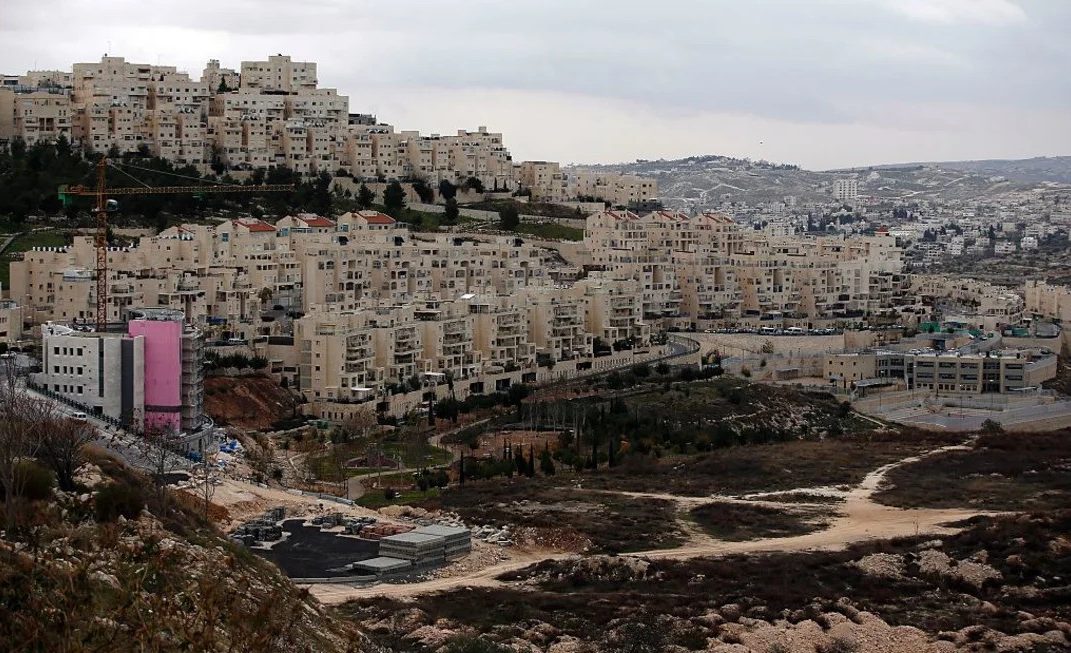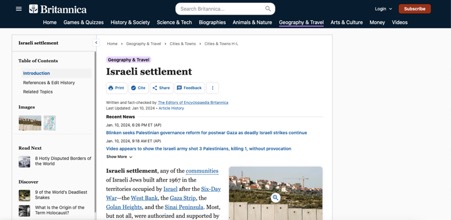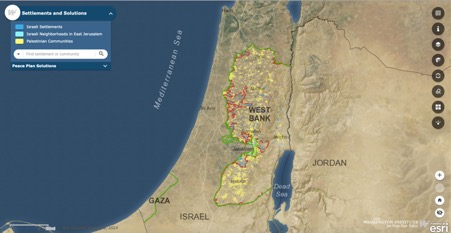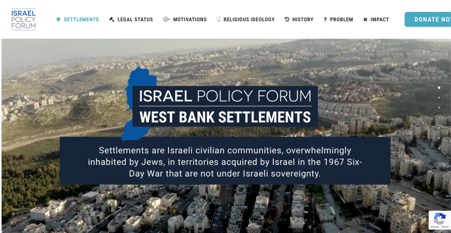What are the Settlements?
What does the term “Israeli settlements” refer to?
“Israeli settlements” has become the common name for Jewish communities established following the 1967 Arab-Israeli War in 1967 in the West Bank, Gaza, Golan Heights and Sinai.
A small number of settlements re-introduced Jewish communities to locations where they had been continuous for millennia but disrupted by war and occupation, such as in the case of Hebron and the Jordanian occupation of the districts of Judea and Samaria - renamed by the Jordanians 'the West Bank' - between 1949-1967.
Settlements remain controversial in Israeli and international public and legal debates because they are located over the Green Line (i.e. the 1949 armistice lines) and are said by some to threaten the viability of a future Palestinian state.
What is the history of these settlements?
The settlements were erected and populated since 1967 for diverse reasons ranging between geo-strategic and security considerations, historical and ideological connections to the land, as well economic benefits.
Security and Strategic Reasons:
After the 1967 War, the first settlements were erected in the Jordan Valley as part of security and strategic plans formulated by deputy prime minister Yigal Alon (the Alon Plan). The settlements were to bolster Israel’s security and enhance its position in negotiations with its Arab neighbours. Although formally not ratified by the government, the Alon Plan became paradigmatic for it led to the establishment of dozens of settlements in the decades to come.
Ideological and Historical Connection to the Land:
The religious-nationalist movement Gush Emunim, initiated settlement plans in “Greater Israel” after the Yom Kippur War of 1973. These plans transgressed Alon’s security concerns or strategic considerations, and were based on the historical and religious connection of Jews to the land, and the messianic aspirations of Gush Emunim.
Until 1977, Gush Emunim settlers encountered government opposition and repeated evacuations by the IDF. After the election of a Likud government in 1977, the settlement project received a boost, and while Gush Emunim ceased to exist as a movement in the 1980s, its members joined right-wing parties and founded the Council of Judea, Samaria, and Gaza (the Yesha Council).
By 1993 - the year Israel and the PLO began negotiations towards a permanent agreement in the Oslo Accords - 280,000 people lived in 128 settlements (including East Jerusalem). The Oslo Accords were meant to find arrangements for key issues like Jerusalem, Palestinian refugees, borders and settlements. The fate of the settlements in the interim period of the Accords was not discussed, although the Labour government under Rabin had minimised the settlement project in the years prior to negotiations.
A final agreement has, to date, not been reached and both the population density and surrounding infrastructure (including access and bypass roads) have increased.
Where do Israeli settlements exist today?
Nowadays, Israeli settlements exist in the West Bank. In 2023, about 465,000 settlers live in 146 West Bank settlements and about 230,000 in East Jerusalem. 155 outposts not authorised by the Israeli government have also been erected there.
In 1981, Israel extended its law, jurisdiction and administration to the Golan Heights, effectively annexing the area, including the communities there.
Israeli settlements in Sinai were evacuated or dismantled in 1982 (as part of the peace treaty with Egypt).
As part of Israel’s withdrawal from Gaza in 2005, all settlements there were evacuated.
What is the status of settlement under international law?
The question of the settlements’ legality or illegality under international law remains complex and controversial and is linked to the other legal questions like occupation and transfer of civilians.
The UN, the International Court of Justice, the International Criminal Court and various international NGOs try to justify the blanket designation of all Israeli settlements (both those authorised by the Israeli government and unauthorised outposts) as illegal by claiming that since the occupation is illegal, so are the settlements; that settlements violate the Fourth Geneva Convention (which outlawed the forcible transfer of civilians across international borders); and that the Rome Statute outlaws the settlements (because it defines the “indirect transfer” civilians as a war crime).
Israel’s responses to the above arguments are, among others:
- the occupation was a self-defense act as a result of war, and it was never requested to withdraw from all territories, only to “secure and recognised boundaries”.
- the relocation of the settlers to those territories has been voluntary and they did not cross internationally recognised borders. Moreover, Palestinians have not been displaced in favour of settlements.
- the novel concept of 'indirect transfer' of civilians appears to apply only to Israel as it has never been cited in relation to settlements established in Northern Cyprus by Turkey, in the Western Sahara by Morocco, or anywhere else in the world.





